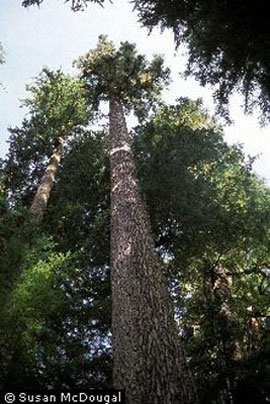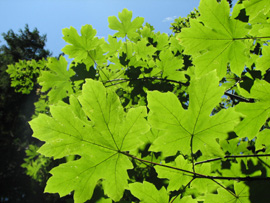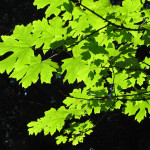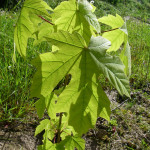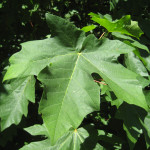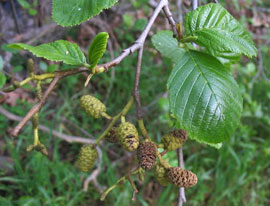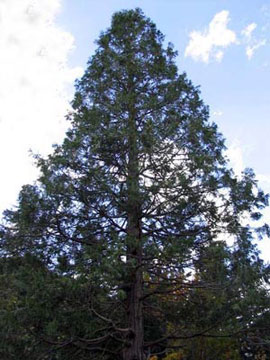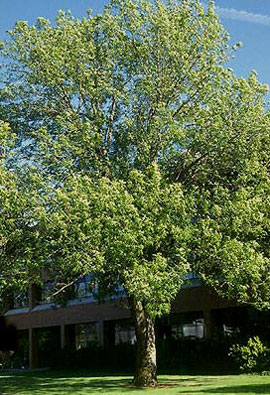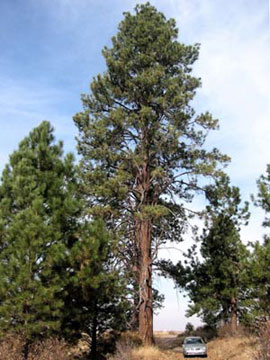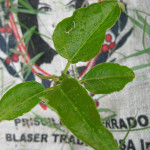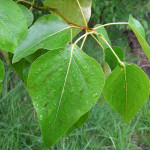Abies grandis
Grand fir (Abies grandis) is a shade tolerant, slow-growing evergreen tree with short, dense branches. It can get quite tall in the wild, reaching 250 feet in height and with a trunk diameter of up to 6 feet.
The glossy dark green leaves are needle-like, 3-6 cm long, and extend flat out from the branch on either side. The 6-12 cm cones do not fall to the ground whole, but disintegrate on the tree and release their seeds about 6 months after pollination.
Grand fir is an important wildlife tree. The California tortoiseshell butterfly feeds on the sap and secretions from cones and needles. Grouse eat the needles, and nuthatches, chickadees, and squirrels eat the seeds. Grand firs also provide excellent cover and nesting habitat for birds and small mammals.
The foliage has an attractive tangerine-like scent, and Grand Firs are sometimes used for Christmas decoration, including as Christmas trees. It is also planted as an ornamental tree in large parks.
Grand fir needs well-drained soils and plenty of room to grow, and is an elegant addition to any landscape.
- Light Requirements: Full Sun, Part Shade, Full Shade
- Water Requirements: Moist, Seasonally Wet
- Ease of Growing: Easy to grow
- Growth Rate: Moderate
- Spreads: No
- Wildlife Support: Hummingbirds, Pest-eating Insects, Birds or Mammals
- Fire-resistant: No
- Edible: No
- Mature Height: 200ft
- Mature Width:40ft


